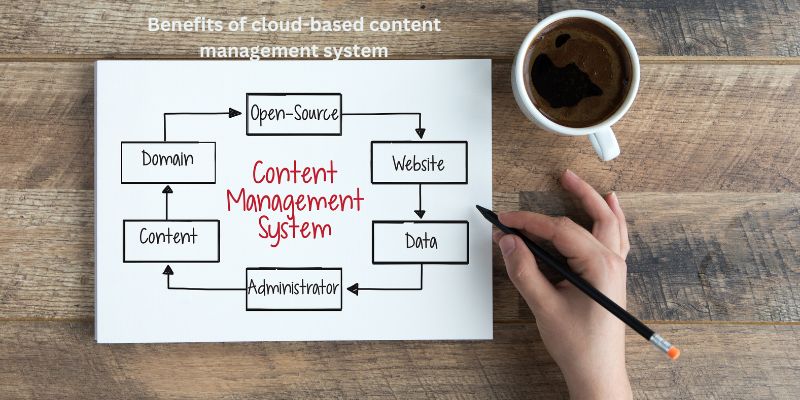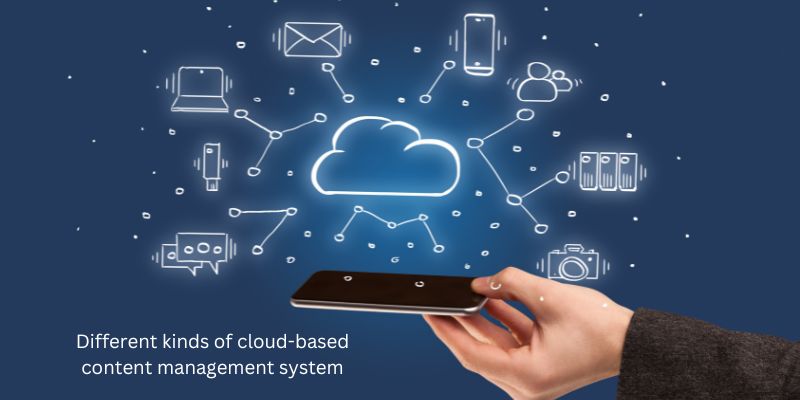Using cloud-based platforms, such as a cloud CMS, to create, edit, organize, and publish material and digital assets is known as cloud content management. Compared to software hosted on-site, it frequently offers better adaptability and flexibility in a constantly evolving digital world. In this technology article, with acameramen.com, let’s find out some useful information about cloud-based content management system!
1. Benefits of cloud-based content management system

- Scalability: A cloud-based CMS is easily expandable to match the demands of your company. Without worrying about hardware restrictions, you may add or subtract resources as needed.
- Accessibility: With an internet connection, a cloud-based content management system is accessible from anywhere in the globe. Collaboration over distance is possible, which may increase output.
- Savings: A CMS that is hosted in the cloud does not require expensive hardware, software licensing, or IT personnel to maintain the system. You just have to pay for the resources you really use.
- Security: To secure your data, cloud-based CMS companies usually have strong security procedures in place. Data backups, encryption, and multi-factor authentication are all part of this.
- Simple software updates and upkeep: Cloud-based content management system providers take care of software updates and upkeep, so you have nothing to worry about maintaining your system current.
- Integration: An e-commerce platform, social media network, and email marketing service may all be integrated with a cloud-based CMS with ease.
- Flexibility: A cloud-based content management system may be modified to suit the unique requirements of your company. Scaling the system to accommodate changing demands is simple, and you may add or remove functions as needed.
Increased time to market, on-demand scalability, worry-free infrastructure management, less risk, streamlined innovation, and effective and efficient omnichannel distribution and data collection are all results of these advantages. With its simple, visual tools and ability to use the advantages of cloud agility, Sitecore XM Cloud, the cloud-native CMS from Sitecore, enables brands to do both. Brands may develop individualized content experiences while remaining current.
2. Features & factors to consider for a cloud-based content management system

When choosing a cloud CMS, the following important aspects and factors must be taken into account:
- Infrastructure based in the cloud – A cloud CMS’s primary requirement is that it reside on a cloud-based infrastructure. This makes it possible for companies to take advantage of the numerous advantages of cloud-based solutions.
- Marketer friendliness – To help the content creators who use it, a cloud CMS must be marketer-friendly. Cloud-based content management system should provide non-technical teams the tools they need, giving marketers access to WYSIWYG capabilities that boosts their productivity and self-assurance.
- Architecture Without Heads – Headless architecture should be used by a cloud CMS to divide the frontend display and backend content management layers. Content may be distributed between channels via APIs because to the separation of the two levels, which also makes backend development independent of frontend development.
- Simple Integration – A cloud CMS should make it simple to integrate with other platforms used by modern businesses, such as CRM, analytics, and online shopping.
- Business-Grade Security – Single sign-on (SSO) and authentication should be provided by a company’s content management system in the cloud.
3. Different kinds of cloud-based content management system

Business content management – Software solutions for business content management are the most well-known content management systems. Although business-oriented versions of these systems exist that take compliance and governance rules into account as well, they are frequently used for personal use to organize, store, and share files, photographs, and videos. Even though they may interface with other content management systems, business content management systems stand out due to their focus on collaboration.
Business content management software is comparable to but different from digital asset management (DAM) software in that the latter is largely focused on the curation of brand-specific media files. Digital asset management is the management of digital assets. The majority of the time, marketing and operations teams employ digital asset management platforms to control their online brand presence. DAMs offer robust capabilities for import and export, streamlined processing, and automated file type conversion because of this.
The production, editing, and publication of text, images, audio, and video files are the main goals of the web content management (WCM) system, another well-liked sort of content management system. Users can pick from a variety of front-end templates in web content management systems, allowing them to concentrate largely on their content. They became well-liked among bloggers and artists as a result.
Enterprise content management (ECM) – Organizations use enterprise content management (ECM) systems to store and manage large amounts of material, such as emails, documents, and records. While offering more thorough security and compliance controls, ECM is essentially comparable to its other CMS siblings. To cut down on the time spent completing unnecessary filing, labeling, and searching, ECM systems can offer further process automation tools.
Headless CMS is an emerging sort of content management system in the context of a fast changing digital world. Only the essential backend of a content management system is provided by a headless CMS, allowing the developer to choose any front end they choose. When creating websites that will be seen on a range of devices, this offers vast customization choices.
Conclusion
Although the initial cost of certain content management systems might be considerable (depending on the type you require), it can save you or your company a lot of money and headaches in the long run.
The task of naming, organizing, and storing physical content is eliminated by content management systems. Many cloud-based content management system also offer thorough version control and check for file redundancy, which can guarantee that all employees within an organization have access to the correct versions of information. Without a content management system to handle it, this can be a difficult task.
I hope you found this article about cloud-based content management systems useful. Have a good day!